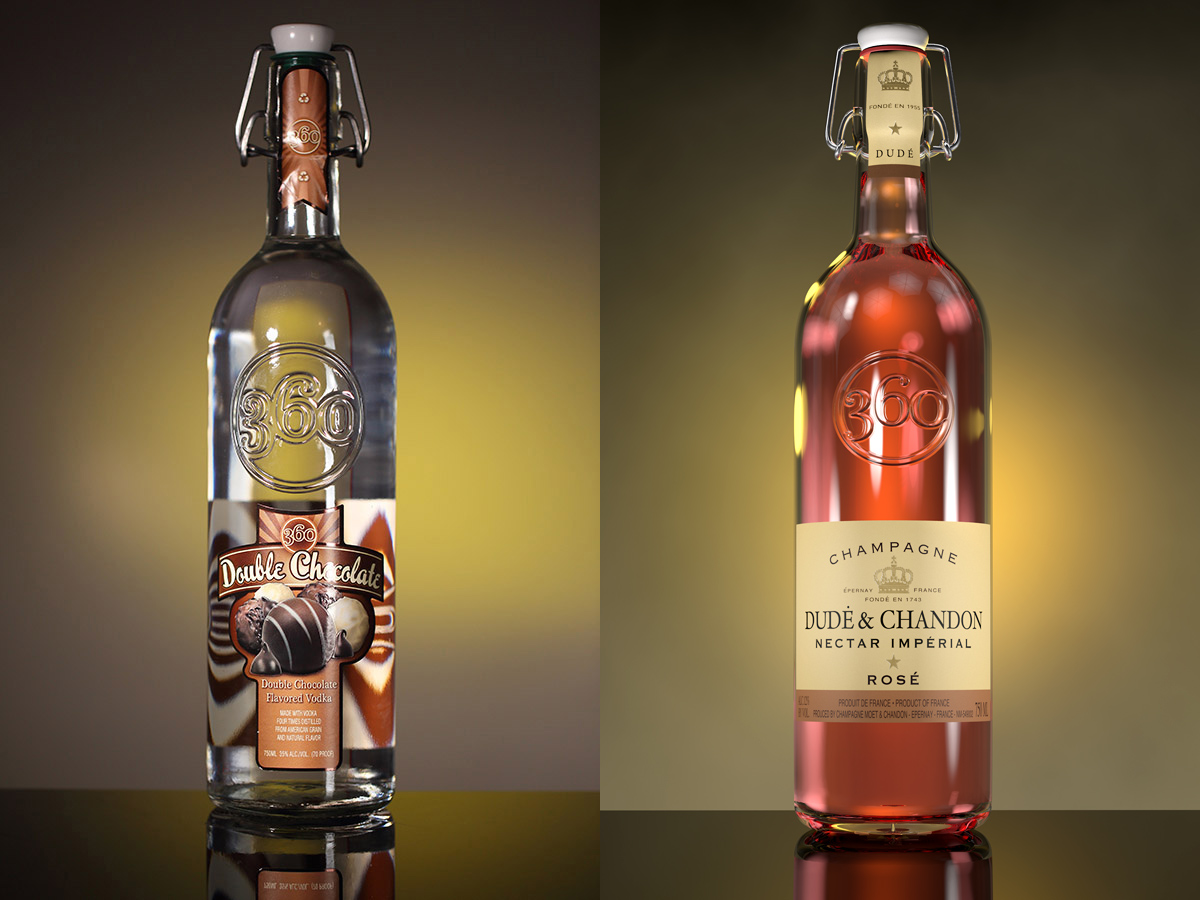Modeling this bottle was a great learning experience. I used several cool tools and features to create it. The etched glass on the front of the bottle is a displacement map made by simply assigning a simple image with an alpha channel to the material and sticking it to the front of the bottle. I am amazed at how well displacement maps work! The real fun, though, was the top closure, which I learned is called a “swing top“. To create it, I used the bezier spline tool with sweep and symmetry nurbs. These powerful tools enabled me to create the complex shapes using exactly NINE points. Incredible!
I grabbed a wine label from the Internet and made a change or two before applying it. As an exercise next time, I’ll have to find the best way to give the labels a tiny bit of thickness, and perhaps an imperfection or two.
The finished render is a bit more subdued than Grant’s photo. It’s a challenge to recreate all of those specular highlights – especially those on the “etched” portion of the bottle, but I’m very pleased with it. 🙂

Click here for a full-resolution view of the rendered 3D bottle. The Cinema4D Physical Renderer achieved this level of quality on my humble iMac with eight rendering cores in just 24 minutes. (It looked ALMOST this good in half that time.) Amazing? Yes, I think so!
Well at least I can drink mine!
Excellent point.
WOW!